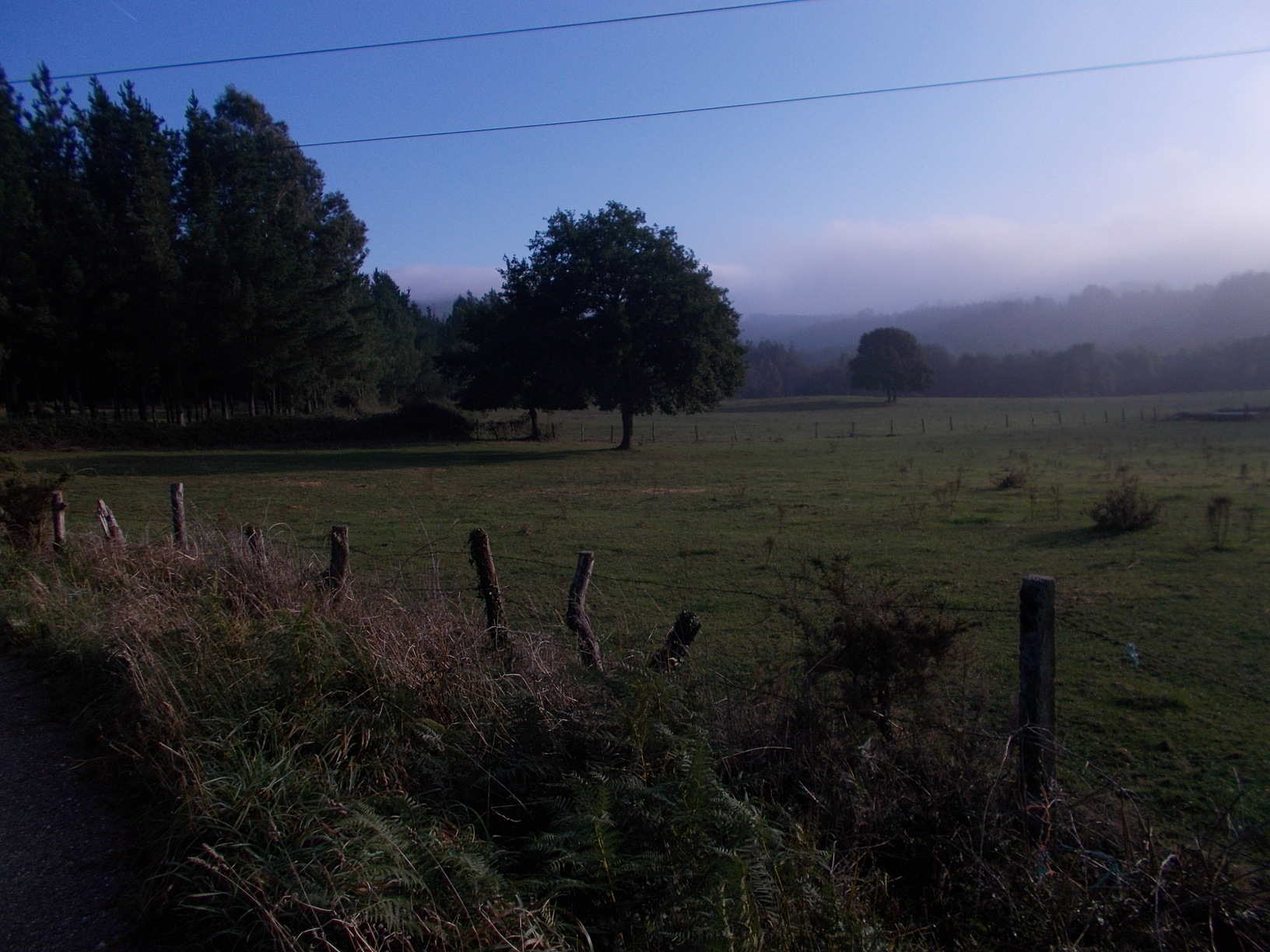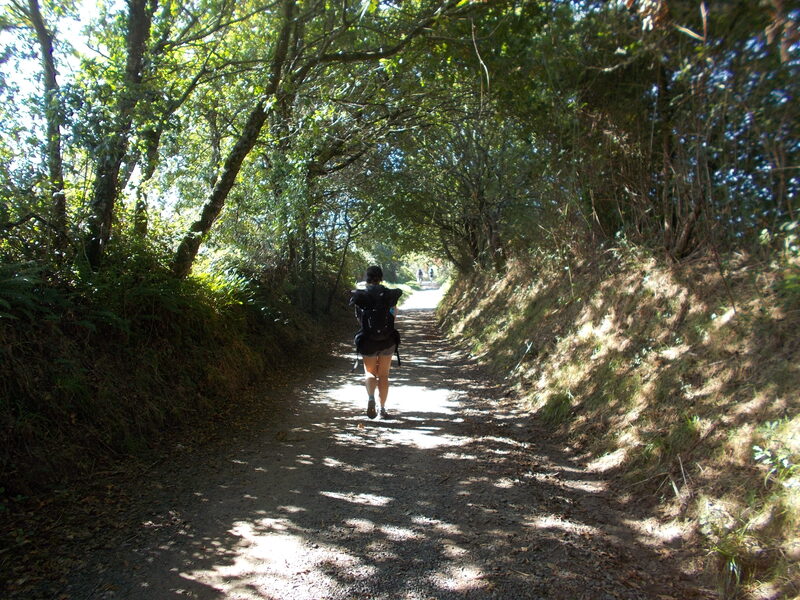People embark on a pilgrimage for a variety of reasons. Some want to grow spiritually, or find the meaning of life. Others want to have a good time, meeting interesting people while traversing beautiful countryside of Spain. And some simply need a change, an escape, seeking an end, or a new beginning… Besides the primary motives, however, people often have secondary motives.
One of the most common is losing weight, but quite a few people hope to pick up some Spanish along the way. Or at least they hope to improve on their Spanish skills, if they already do speak the language. Is Camino the right place to do so, however? And what should you do while walking the Camino, if learning Spanish, or improve on your existing skills, is your goal? We will try to find the answers on the following lines.
Table of Contents
There’s no better place to learn Spanish than Spain
First of all, certain rules do not change. If you really want to learn the language, the best place to do so is always a country where people speak that language. Because you are in a daily contact with the language, often without consciously realizing it. People walking by speak Spanish, you see Spanish signs all around, labels in the shops, items on the restaurant menu, you can listen to the conversations in the language, and so on, and so forth. Such environment can hardly be replicated in a classroom setting, which every teacher will confirm.
What’s more, this is real Spanish, that means how common people talk together. The phrases they use when meeting on the street, eating in the restaurant, doing their shopping, having fun. These are often quite different from what you learn in the books. Having said that, is Camino the Santiago a good place to learn Spanish?

– International group of pilgrims sharing a dinner in one of the pilgrim hostels, with about half of the people being Spanish. An ideal opportunity to practice your language skills…
On some ways of Saint James you won’t get by without speaking Spanish, whereas on others you’ll barely need it
Let’s face the reality. Not each camino is equally popular, and equally touristic. Different caminos also attract different nationalities. For the folks from the US, Camino Frances is “The Camino”. Unless we speak about experienced pilgrims who have done multiple pilgrimages, US pilgrims follow the French route, the one depicted in The Way movie.
And since they have such a big economical power and typically spend thousands of euros on their pilgrimages, and come in numbers (when situation allows it), the entire business environment has adjusted to it heavily. What I try to convey here is that virtually every hospitalero, waiter, pharmacist, street seller etc speaks some English. They will approach you in your language. This isn’t bad, of course. At the same time, however, it isn’t ideal if you want to learn the language while walking the pilgrimage. Let’s face it–when you aren’t “forced” to speak Spanish, you will always opt for a language you are more comfortable with–that means English.
Camino Frances is also a “camino of foreigners“, unless we talk about last 100 kilometers from Saria to Santiago de Compostela. Spanish people opt mostly for other ways. Hence you won’t be motivated to speak Spanish for the sake of having a meaningful conversation with this or that charismatic pilgrim. To sum it up: Camino Frances isn’t an ideal way to follow if one of your motives to walk the pilgrimage is learning Spanish language.
Learning Spanish on Camino del Norte, Camino Primitivo, Via de La Plata and other ways
Situation changes completely on other caminos. Each camino is unique and beautiful in its own way, but they are not equal when it comes to learning the language. Let me try to briefly explain what you can expect (in terms of languages) on other pilgrimage ways in Spain.
- Camino del Norte. You will need Spanish to get around on this Camino, and speaking the language (even slightly) will make your experience so much richer! However, the problem is that you’ll walk the first week (from Irun to Bilbao) in Basque country. People here speak Euskara, which is a language completely different from Spanish… Further on, however, in Cantabria and Asturias people speak Spanish, clearly and with little dialect. In my opinion, these are some of the best places to speak with locals while working on your language skills. What’s more, camino de la costa (as it is often called) is very popular for Spanish people during he summer (especially those living in the south of the country), so you’ll have plenty of opportunities to talk to fellow pilgrims in Spanish.
- Via de la Plata. Speaking in terms of “pilgrimage development”, that means number of albergues, spacial places for pilgrims, and overall awareness of the locals when it comes to modern pilgrimage, Via de la Plata is without a doubt the least developed camino (from the popular ways). You will have to speak Spanish to get around. It is more an exception than a rule to get around in places with English (or French, or other languages popular on the Camino). Definitely a great way to walk if improving Spanish is amongst your priorities, especially if you aren’t a complete beginner.
- Camino Primitivo. The way has been commercialized a lot in the recent years. Many people speak English, simply because they had to learn to speak the language if they wanted to stay competitive. At the end of the day, they want to attract the hordes of foreign pilgrims, instead of seeing them staying in places and restaurants run by their competitors… Primitivo isn’t the best way to learn the language.

– Stall of a local bakery in one of the small cities on Camino del Norte. A great opportunity to get some delicious pastry and practice your Spanish at the same time.
Galicia–where each pilgrimage ends
Galicia. Each Camino ends in Santiago de Compostela, though not every pilgrim reaches the place with its famous Cathedral. Santiago de Compostela is situated in the west of Galicia, and you will always spend at least a few days walking in this beautifully green (but rainy) province of Spain, before finally reaching Santiago.
However, people in Galicia speak Galego. It has many similarities with Spanish, but it isn’t the same language. Sure enough, most Galicians can speak Spanish, but they prefer to speak their own language. You should take this into consideration while deciding about your pilgrimage, what way you want to walk, where you want to start and end.
Everything is so much easier when you already know the basics of the language
I’ve witnessed some pilgrims picking up quite a lot of phrases along the way. They had talent on languages, and eventually managed to get around in shops and pilgrim hostels comfortably, though they spoke no Spanish beforehand. Unless you can rely on such talents, however, I strongly suggest you to learn at least the basics before leaving for the pilgrimage.
Now it doesn’t mean that you have to hire a Spanish tutor, or spend 4 weeks in Madrid in an extensive (and expensive :)) Spanish course for beginners, before you start your walk. You can use amazing free apps like Duolingo, for example, which is the app I used in my humbler beginnings, before embarking on my second pilgrimage (I didn’t speak a word while embarking on the first one, but I walked the French way, so it didn’t matter much). Even with half hour a day you can learn the basics, and everything will be much easier from then on.
Speaking Spanish makes your camino experience so much better
I’ve walked many caminos in my life. The first one I spoke no Spanish, second one just very little, but then things slowly progressed (and then they did progress more rapidly). On my fifth camino, I was able to speak Spanish almost fluently, and enjoyed conversations on a variety of topics with both the pilgrims and the locals.
I cannot stress enough how richer the experience was. Speaking to people I met on the streets, in the restaurants, speaking with Spanish pilgrims, I made connections I would never be able to make lacking these skills. And I learned so much more than on my other caminos–about the people and their lives, about the places we passed, about everything. What’s more, when other pilgrims needed help, and they struggled with the language, I was able to help them, and arrange things for them. Speaking Spanish does not make the camino better only for me–it also made it easier for other pilgrims who share the path & accommodation with me along the way. Consider this if are still deciding whether it makes sense to learn Spanish :).
Conclusion
Sure enough, Camino de Santiago isn’t a language course. You won’t become fluent in Spanish after walking for 30 days, regardless of which way you pick for your pilgrimage. Having said that, if you choose the right way, and have the right attitude (speaking to locals, not being ashamed of making mistakes), you can definitely pick up some Spanish (if you are just starting out), or improve on your language skills heavily (if you know the basics already).
I hope this article helped you to understand what way to pick, and how to approach both your preparation and camino, if improving on your Spanish belongs to your goals. Should you have any additional questions, do not hesitate to contact us. Buen Camino!
Matej




![Ultralight Packing List for Camino de Santiago [2025 Edition]](https://caminolovers.com/wp-content/uploads/2022/03/altra-shoes-640-x-480.jpg)


